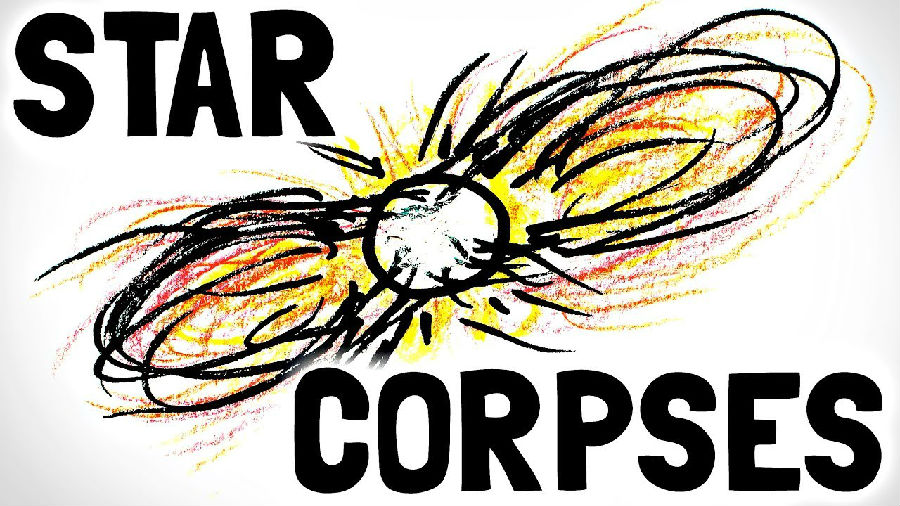There's plenty of stuff in the universe that defies the human urge to categorize everything:
宇宙中有很多东西是人类无法归类的:
I mean, is Pluto a planet? Is this a new species or subspecies? Man or woman? Green or blue or teal?
我是说,冥王星是行星吗?这是一个新物种还是亚种?性别?绿色、蓝色还是蓝绿色?
However, sometimes nature gives us a helping hand and provides a hard, physical line distinguishing two things,
但有时自然给予了我们帮助,并提供了一条坚定的物理线来区分两种事物,
like the line between white dwarf stars, neutron stars, and black holes.
比如白矮星、中子星和黑洞之间的那条线。
These are the different possible kinds of corpses of dead stars,
这些可能是不同种类的死星残骸,
and what distinguishes them is how they hold themselves up against the inexorable attraction of gravity.
并且它们的不同之处在于它们对抗不可抗拒的地心引力的方式。
Let's begin, though, with what makes something a star in the first place: fusion of hydrogen.
让我们首先来看看是什么使某物成为恒星:氢的聚变。
Below about 8% of the mass of the sun, a gas ball isn't hot and high pressure enough for hydrogen to fuse
在不足太阳8%质量情况下,气团没有足够的压力和温度来让氢元素聚变,
and you get a failed star, essentially a really heavy version of Jupiter or Saturn.
恒星就无法形成,本质上是一个超重版本的木星或土星。
Above this dividing line are stars like red dwarfs, our sun, and so on,
在这条分界线的上方是像红矮星、太阳等恒星,
which use hydrogen fusion to keep themselves hot enough to stave off gravitational collapse.
它们利用氢聚变来保持足够的温度来避免引力坍缩。
But eventually stars run out of fuel for nuclear fusion, and die.
但最终恒星会耗尽核聚变的燃料,并死亡。

And when a star dies, it will turn into one of three very different and physically-distinct things.
当一颗恒星死亡时,它会变成三种物理上不同的天体之一。
If the star is small its core will turn into a white dwarf, which is an object about the size of the earth, almost as massive as the sun,
如果这颗恒星很小,那它的核心就会变成一颗白矮星,一种和地球大小相当,提及接近太阳的物体,
and is held up against gravity not by heat but by electrons repelling each other due to the "Pauli exclusion principle".
它不是靠热量,而是根据泡利不相容原理,靠电子的斥力来来抵消重。
This effect is essentially a star-sized version of how electrons fill subsequently bigger orbitals around an atom,
这种效应本质上是,一个恒星大小的原子周围电子填充轨道的版本
because of a fundamental law of the universe that no two electrons can share the exact same state.
因为宇宙的一条基本法则就是,没有两个电子可以在同一时间共享相同的状态。
If the star is bigger , its core will be too heavy for this kind of electron repulsion to hold it up against gravity,
如果这颗恒星稍大些,那么它的核心对于这种电子斥力来说太重了,
and instead it'll collapse even more until it's around 10 kilometers in size, all of its electrons and protons fuse together into neutrons,
并且它们无法抵抗重力,因此恒星会进一步坍缩,直到它直径变成10千米,它所有的电子和质子都被融合在一起形成中子,
and it's held up instead by the nuclear repulsion between neutrons, as well as the neutron version of the pauli exclusion principle. Aka, a neutron star.
取而代之的是中子之间的核排斥来抵抗重力,以及泡利不相容原理的中子版本来支撑的。又名中子星。
If the dying star is yet bigger still (or if two neutron stars collide and merge),
如果垂死的恒星更大(或者两颗中子星相撞合并),
its core will be too heavy for either the strong nuclear force or pauli exclusion principle to hold it up against gravity,
它的核心会过重,无论是强核力还是泡利不相容原理都无法使它抵抗重力,
and it will collapse until it's held up by, well, as far as we know there's not anything left to hold up stuff this dense, and it'll collapse into a black hole.
它会坍缩,直到它被,嗯,据我们所知,没有任何东西能支撑这么稠密的物质,它会坍缩成一个黑洞。
So when a star dies, what it turns into depends on its mass, and what distinguishes these star corpses from each other
所以当一颗恒星死亡时,它会变成什么取决于它的质量,这些星际残骸的不同之处
is what they're made of and how they hold themselves up against gravity (or don't).
在于它们是由什么构成的,以及它们是如何对抗地心引力的(或者无法抵抗)。
But enough about space objects that have nice, clean, easy definitions.
但是关于太空物体的定义已经足够清晰明了了。
There's also a lot of stuff out there that doesn't fit nicely into boxes. Like moons.
还有好多东西我们无法的准确的给它们分类,比如月亮。
We supposedly have a good definition for what a moon is but our solar system is full of objects
我们应该对月球有一个很好的定义,但是我们的太阳系里
that fall into a weird grey area between moon and not moon.
有很多物体落在了月球和非月球之间的灰色地带。
Come over to MinuteEarth to find out why our definition of 'moon' might be broken!
快来 MinuteEarth发现为什么我们对卫星的定义有可能是有问题的!


